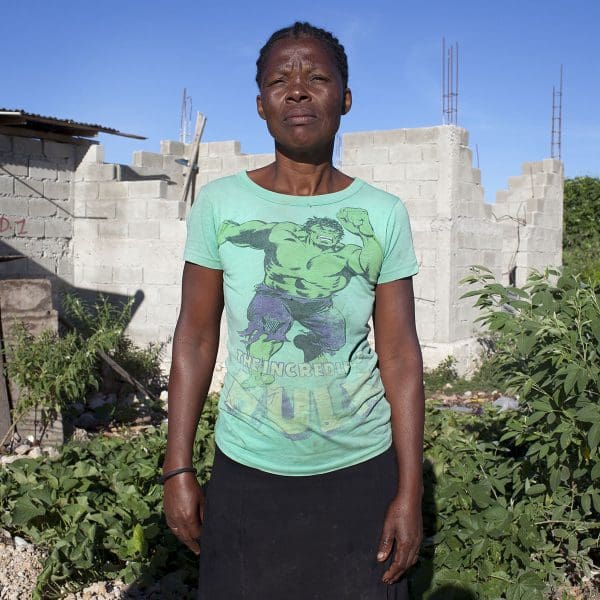
Making Space at the Table
NAP Contemporary’s group show, The Elephant Table, platforms six artists and voices—creating chaos, connection and conversation.



Most of us are aware, at this stage, that our consumption habits have spiraled into a crisis situation across the globe. Rivers in India foam with coloured run-off from textile factories. Land fill is clogged with polyester. The prevalence of cheap, poor quality clothes, known as ‘fast fashion’, means turnover is swift and garments are discarded after only a few wears.
Fast Fashion: The Dark Side of Fashion makes no bones about these facts. The message is clear: the solution less so. Originally presented at Museum für Kunst und Gewerbe Hamburg, the exhibition also includes a local component, the Slow Fashion Studio, produced in collaboration with the RMIT School of Fashion and Textiles, which explores ‘slow fashion’ alternatives to the relentless fast fashion machine.
Every wall is filled with text and infographics detailing the social, economic, and ecological realities of the textiles industry. These demonstrate that clothing is cheaper than ever – a t-shirt costs the same as a wedge of cheese, a pair of shoes is comparable to a cinema ticket – yet we wear only a fraction of our wardrobes. A map tracks the journey of a pair of jeans, which takes in six countries during manufacture, is sold in Germany, and ends up in Zambia for disposal as used clothing. And on and on.
A selection of documentaries probe the effects of Western consumption on people in Bangladesh, Turkey, India, Romania, China and Vietnam. In a film called Unravel, bales of castoff and Western clothes are trucked to a town in India where workers sit on the ground to shear the clothing of buttons and zips, and sort them into chromatic mountains. The slashed garments are shredded down by clanking decades-old machinery then spun back into coarse thread and woven into blankets, which are distributed across South East Asia. We watch the video sitting on clothing bales, implicating our bodies in the act.

In this space, the reality is so weighty – at once appallingly frivolous, crushingly terrible – that to turn them into a creative project comes off as didactic, or worse, flippant, adding little to the avalanche of facts and films that add up to a crisis. In Susanne A. Friedel’s beyond fashion, 2012, quotes from garment workers are placed into mock advertising photos, in which the clothes they apparently made are styled on Western models. Unfortunately, the chosen images are reductive at best. A worker describes oppression; the image is a model with a scarf stuffed in her mouth. A worker describes never seeing her daughter; the image is a white woman holding a baby. This ham-fisted approach weakens the urgent reality it tries to convey, in an attempt to make the issue relatable for a Western audience. Aside from anything else, it implies that we can only understand the plight of garment workers if their words are channeled through Western bodies.
The more compelling works tend towards the photojournalistic. Taslima Akhter documents a catastrophic textile factory collapse in Bangladesh in 2013, which killed and injured thousands of low-paid employees, mainly women. Paolo Woods’ series Pepe T-shirt, 2013, refers to the t-shirts with terrible English slogans (“I Pee In Pools”; “Kiss Me I’m A Blonde”), that are manufactured en masse in Haiti and shipped to the USA; unsold garments are later shipped back to Haiti, where they’ve flooded the clothing market and put local manufacturers out of business. The people whose bodies inhabit them often don’t speak English, and have no idea what ridiculous or vile slogans they wear on their chests.
Jo Cramer’s Outfit from the LivingWardrobe, 2016-17, is a line of ready- to-wear garments designed for easy adjustments and repairs, each with a QR code linking to a website of resources. The Mending Mart, 2017, sees fashion practitioner Tania Splawa-Neyman set up shop once a week, mending garments brought to her, and passing on practical skills in darning and patching that might at least help preserve a few items for a few more cycles. Other artists use fabric discards or offcuts, employ time-consuming traditional techniques, or turn existing objects into new artworks.
These proposals, although thoughtful, intelligent and frequently beautiful, largely have an effect only at the purchasing level of the fashion cycle. Fast Fashion presents a problem that is structural, but most of the emphasis for change seems to push individual consumer choice. I experienced a strong compulsion to go off-grid and start weaving my own clothes out of grass; and there’s no doubt buying locally-made jeans – and mending them, and only buying one pair – has a small effect. But as a society we’ve been trained by the grinding machine of late capitalism, an enormous, cyclical beast extending far beyond the capacity of an individual. When considering the cumulative mountain of Fast Fashion, it’s hard to see how anything could make a dent.
Fast Fashion: The Dark Side of Fashion was on at RMIT Gallery from 21 July to 9 September.